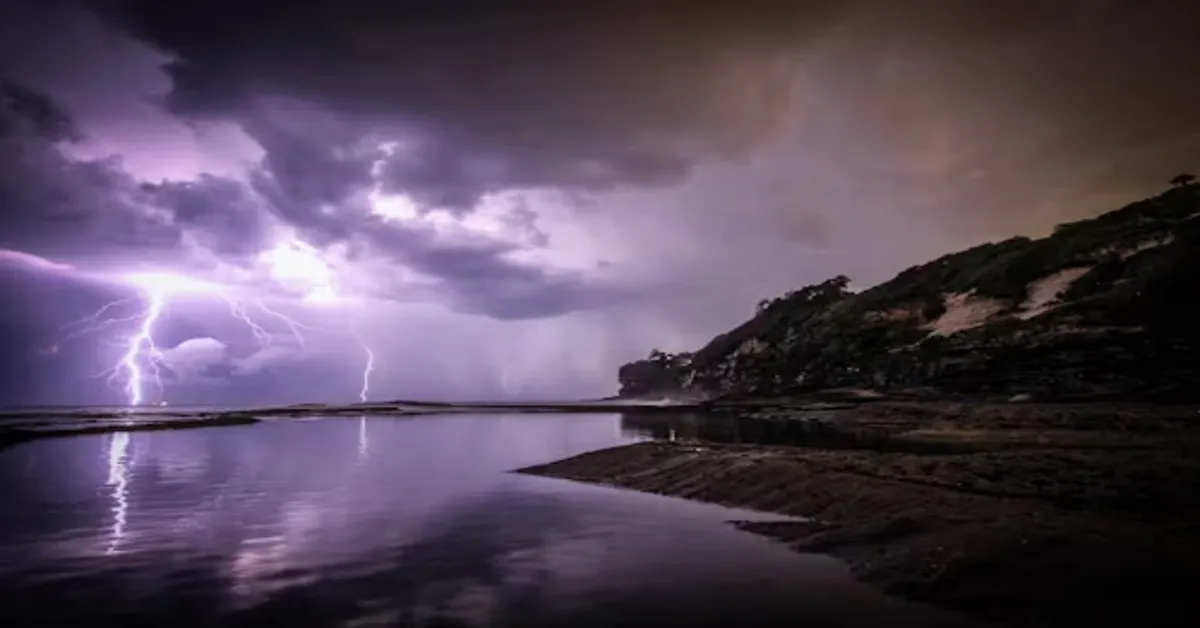Beach holidays are generally associated with pleasure, sun and relaxation, but a beach setting can transition from paradise to unfavorable with the arrival of darkening clouds announcing an incoming storm. Lightning is one of the dangers in a beach setting that does not receive enough attention. There is a common understanding that electricity and water do not mix, but people are still cavalier about the danger of being struck by lightning when at a beach.
This lack of concern has resulted in fatalities in recent years and the necessity of more effective public safety campaigns, competent lifeguards, and stronger weather-response systems.
Why Lightning Strikes Are Especially Hazardous on Beaches
Often devoid of tall buildings or protection, beaches are huge open areas. This means during electrical storms both humans and aquatic habitats are very vulnerable. Lightning searches the path of least resistance to the ground; persons strolling on wet sand or swimming in the ocean become ideal conductors. Furthermore, seawater, a very conductive substance, widens the radius within which lightning can cause death or harm.
In a beach scene, people sometimes wait to evacuate till they see rain, not knowing that lightning may strike miles distant from the center of a storm. Over the years, this “bolt from the blue” phenomenon has claimed many lives and caused injuries. The threat becomes even more pressing without close, immediate housing.
The Lifeguard Shortage Crisis
Pools, lakes, and especially beaches are particularly affected by the lifeguard shortfall presently afflicting the United States. Fewer lifeguards cause public safety concerns to sharply increase. This scarcity results from low salaries, the physically demanding nature of the work, and a decline in individuals signing up for lifeguard courses.
When beaches are understaffed, it becomes almost impossible to watch every swimmer, implement safety zones, or quickly react to storms like lightning strikes. Some beaches run unattended as a result of the lifeguard scarcity, therefore leaving visitors dangerously uninformed and unprotected during rapidly approaching storms.
Public education and the need for awareness
An essential part of lightning safety is raising public awareness. Many others are just ignorant of the dangers or what to do when a storm draws near. Often disregarded or misunderstood are the signs and announcements warning of lightning. Enforcement of evacuations and real-time clarification of the hazards by well-trained lifeguards might help close this gap.
Including lightning safety into lifeguard training courses guarantees that beach staff members are ready to handle such unanticipated incidents. It also gives them the power to enlighten the public, perhaps avoiding disastrous results. Lifeguards alone, though, cannot bear the load without extensive public awareness campaigns and community participation.
Prevention and Technology
This is the age of technological advancement and everything is digitalized for getting better and efficient results. New approaches to identifying and reacting to lightning threats come from lightning detection systems, smartphone alerts, and real-time weather monitoring apps. But these instruments are only useful when used within the beach’s emergency action plan and under trained personnel.
Trained in the usage of such tools, lifeguards are better equipped to make wise decisions, provide prompt warnings, and start evacuations. Prevention of lightning-related injuries and deaths calls for a mix of technical tools and careful human supervision.
A Major Investment in Public Safety: Lifeguard Training
Learning how to swim or execute CPR is far outside of lifeguard training. Managing erratic hazards like lightning strikes on beaches requires these to be absolutely essential. Municipalities and commercial beach operators must understand the importance of funding thorough lifeguard training and personnel.
Enrolling in recognized lifeguard courses can be the first step for budding lifeguards toward making a change. These courses teach not only practical abilities but also a strong feeling of leadership and accountability—traits necessary in circumstances where life is in danger.
Expert Opinions: Public Danger from Lifeguard Scarcity
A well-known organization, the American Lifeguard Association, has been a major voice in drawing attention to increasing worries about lifeguard shortages and their effects on public safety. Reported in electronic and print sources, the Association stresses that poorly funded lifeguard training and certification programs may have catastrophic consequences, particularly in the face of environmental dangers including lightning.
Encouragement for more backing from local governments comes from the Association, which also urges them to fund recruiting, training, and retention programs. Their professional judgment supports the truth that strong, well-trained lifeguard teams are vital for beach safety—not optional.
Final Word: Preparing for the Unknown
On beaches all around, lightning strikes are a fatal but usually neglected threat. These unexpected natural disasters might transform a quiet day by the water into calamity in mere seconds. The dangers are now greater than ever as beach attendance soars throughout the summer months. The key to reducing these hazards is sound preparation, public knowledge, and, above all, a well-trained and properly staffed lifeguard team.
Investing in lifeguard programs and encouraging participation in lifeguard courses is not just about filling a job—it! ‘s about protecting lives. The American Lifeguard Association keeps leading awareness-raising initiatives and establishing training criteria that cover not only basic water rescues but also emergency preparedness for storms and lightning dangers. Though lightning can be erratic, our reaction to it need not be.

